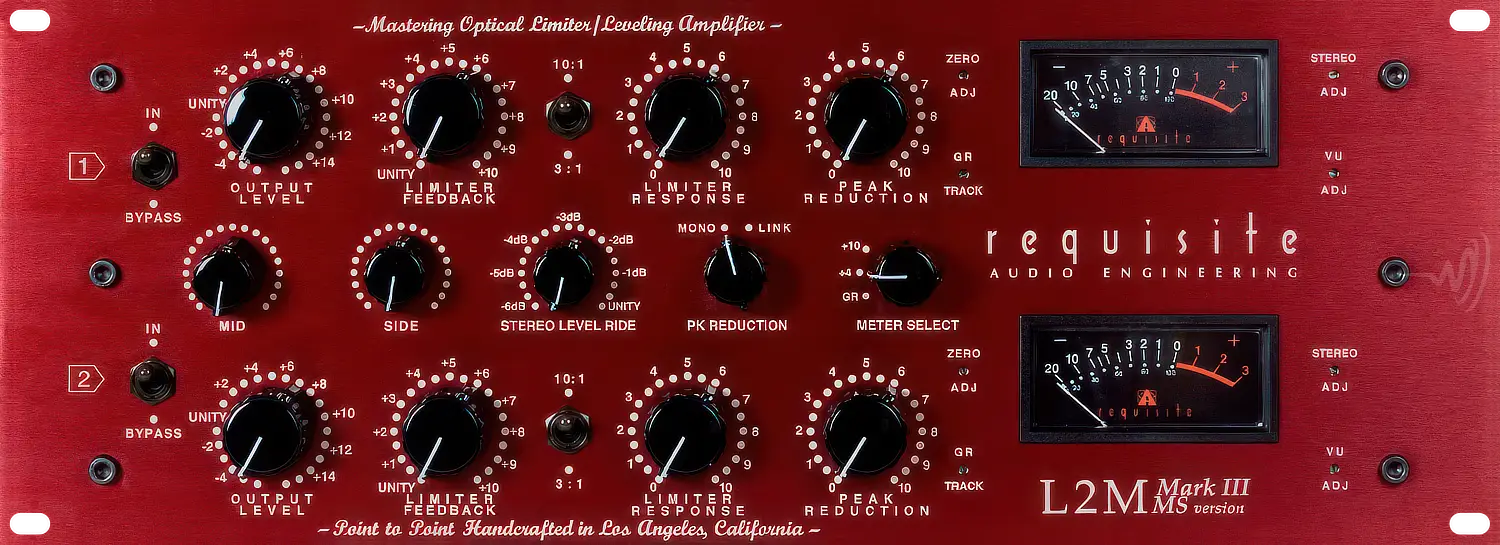In it’s 12th year of production, the Requisite L2M is an optical limiter based on classic designs of the early 1960s and is the beneficiary of many significant improvements, representing what a truly refined optical limiter can be. We classify the Requisite L2M as a mastering limiter because it was designed with the specialised requirements of the mastering engineer in mind, though, the Requisite L2M is equally at home in tracking and mixing applications.
Among the more notable performance features of the Requisite L2M are its sonic excellence, versatility and stable frequency response while limiting program material. When providing unobtrusive compression/limiting action, there is no undulating bottom or loss of openness, even in the heaviest of limiting situations. Corrective EQ, following the L2M, is simply not required. With the Requisite L2M, your work stays intact, just as you need it to.
Output Level
Output level/make-up gain is accomplished using a precision 24-step attenuator (one for each channel). Range of settings is from -6dB to +17dB in 1dB increments. The L2M is shipped with UNITY calibrated to within .1dB. Each channel is calibrated by its respective UNITY ADJ trimmer on the back of the unit.
Limiter Feedback
Left to run freely, vacuum tubes are not linear and exhibit a considerable amount of harmonic generation and other forms of distortion. For over half a century, negative feedback has been engineered into circuits to “improve” the linearity of vacuum tubes when used in audio gain stages. However, best readings on a meter don’t always equate to the ideal sound, whatever that happens to be. By making LIMITER FEEDBACK an adjustable feature, harmonic content and texture are put into the hands of the audio engineer and not the guy with the THD meter.
Limiter Response
The Requisite L2M will provide equal compression/limiting at all frequencies by responding to the entire spectrum of the program material. When LIMITER RESPONSE is set fully clockwise, frequencies below 1-kHz gradually require more energy to initiate gain reduction. For frequencies below 100Hz, gain reduction initiation is down approximately 10dB. This arrangement is ideal for general program material & especially material with a great deal of bass energy and/or broad bass dynamics. The result is a marked smoothing of mid and high frequencies (above 1-kHz) and a tight/punchy bass response.
Mid/Side
Mid/Side on the Requisite L2M is effective for tracks recorded using stereo micing techniques.
Stereo level ride
Having a total range of 6dB, STEREO LEVEL RIDE is ideal for manual adjustment of level transitions from various sections of the program material within the analog domain. Stereo tracking of this dual-ganged pot is extremely accurate and holds a tolerance within 0.2dB throughout its entire range.



